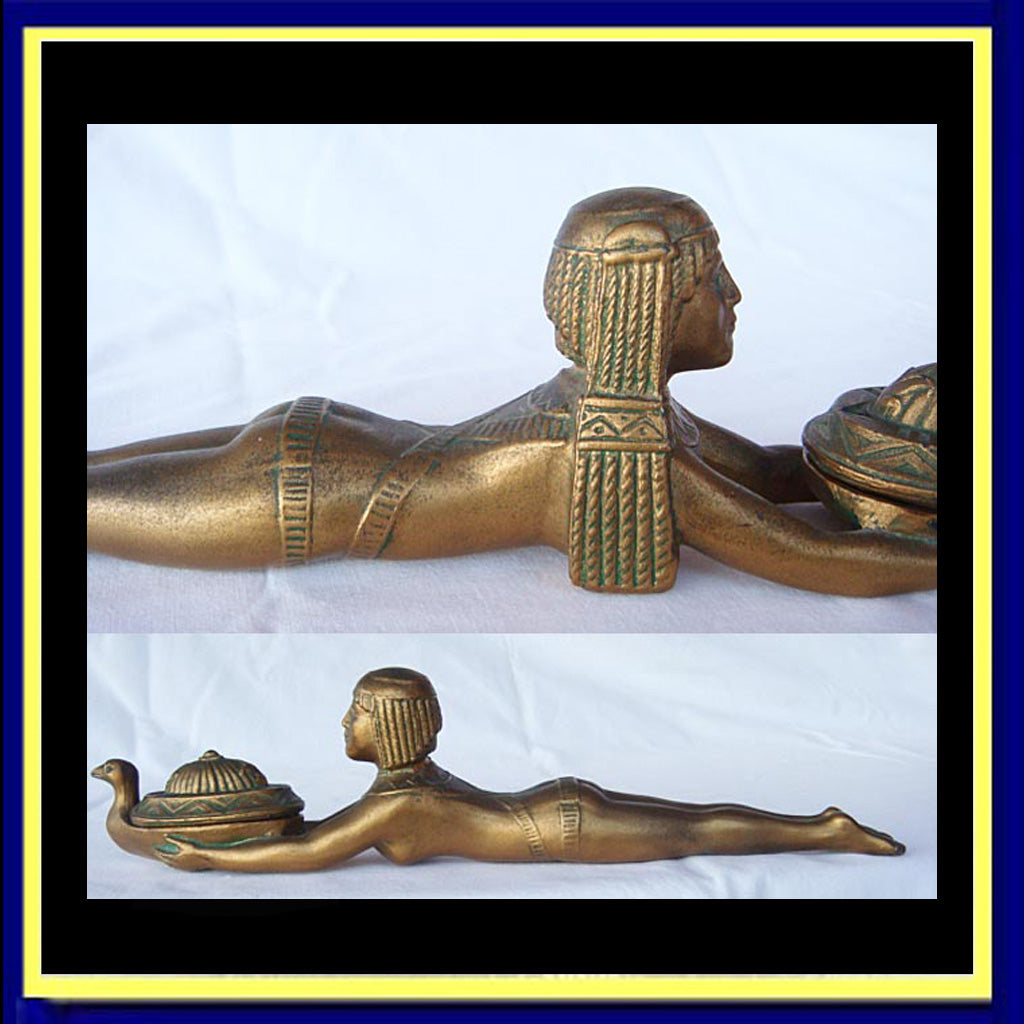Brenda Ginsberg Antique Jewelry
Antique Deco perfume burner sculpture figure goddess slave Egyptian Revival (4472)
Antique Deco perfume burner sculpture figure goddess slave Egyptian Revival (4472)
Regular price
$1,000.00 USD
Regular price
Sale price
$1,000.00 USD
Unit price
per
Couldn't load pickup availability
|
Antique, Art Deco Egyptian Revival perfume burner. Gilded. Circa 1920's. Country of origin unknown. 13-1/2 inches (34.3 cm) long. Weighs 900-1000grams. Modelled as a recumbent Egyptian young woman, making an offering. She lies stretched out. Naked but for her rich jewellery, a necklace and belt crossing her back and buttocks. Small skirt in front. Outstretched arms hold a duck-shaped vessel, which holds the perfume or oil, to be burned. Clear signs that it was used. Removable lid with triangular holes for smoke to escape from. Great detail - from the modelling of the toes to the pattern of her necklace and stylised Egyptian style hair-do. Metal is heavy. No visible maker's marks. Good, used condition. Original patina with minor gilt wear.
THE STORY: For hundreds of years, the world has been fascinated with Ancient Egypt.
Following Napoleon Bonaparte's campaigns in Egypt, there was a huge mania for Egypt-related jewelry in France. With the opening of the Suez Canal in 1869, there was an even bigger resurgence of this passion. Even jewellers like Castellani, who generally focused on the Ancient Greeks and Etruscans, made fabulous jewelry set with micromosaics as echoes and in homage to the Ancient Egyptians. Most of us will never see a Castellani micromosaic in the Ancient Egyptian style, but there are some available by other makers such as out brooch #6840 with Pharoah portraits. Other fabulous jewels, enamelled, set with gems, in a variety of materials from wood to gold and platinum, show the range of influence of Ancient Egypt. Louis Comfort Tiffany, who toured in Egypt as a young man was greatly influenced by Ancient Egypt both in his early jewelry and in the making of glass. Egyptian Revival jewelry received its greates boost after 1922, when Howard Carter discovered King Tutenkhamun's tomb. Some Egyptian Revival jewelry is accurate in its depiction of hieroglyphics and other Egyptian symbols. Some of the most interesting jewelry from the late 19th century in this style incorporate actual Ancient Egyptian items - medallions, faience, scarabs into their gold mounts. Most Egyptian Revival jewels are more decorative, using the symbols of snakes, cats, sphynxes, pharoahs and scarabs in a more decorative fashion. |








